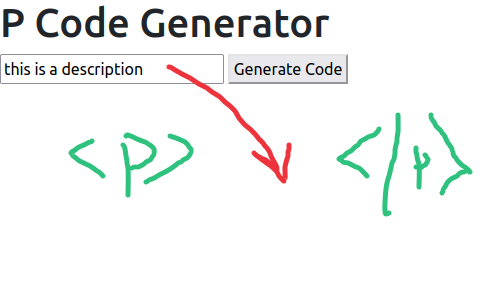Search the Community
Showing results for 'detecting mobile device'.
-
I have a row of 2 columns. Left is an image, right is text. The image is cropped at the bottom, so when it gets to the width of a smaller device, I want to swap them over, so that they go 1/1 on each col, and the image is under the text. I tried Flex, but that forces it to be 50/50 width. I'm sure in CSS it is easy, but can't figure it out. Hope someone can help. I have tried this: @media only screen and (max-width: 950px) { #flex { display: flex!important; flex-flow: column!important; } #flex .grve-row { display: flex!important;} #left { order: 1!important; } #right { order: 2!important; } }
-
If you want to hire the best iOS mobile app development company in the United States to make your brand more prominent in the digital space, then Zazz is a service provider you can always count on. Even though it is not very complicated to hire top agencies or connect with the best application developers, our team has expertise in iPhone and iPad app development which makes us a reliable iOS app development team.
-
I'm not experienced by any means and I am really struggling on fixing this issue on my site. The font and everything is how I want it to be, however on certain occasions, seemingly at random, the font will be larger or smaller in a few spots when on mobile. The 1st image is how it should be. The second image is where the font enlarges randomly after filtering (only sometimes). The 3rd image is correct, the 4th image is font small upon load. The "Filter Player" and "Filter Second Player" font, along with the "Lineup #" will sometimes load very small. If I rotate screen or refresh page, that will fix it. I only have one media query. It is set for larger screen mobiles such as my galaxy s21 plus. The main container is: container. each individual lineup is in a container within the main container. The container for lineups is lineup-container. #toggleButton is the "Top 3 Man Stacks" text/button. I have the viewport capped at 1000px which is different then what most sites do, however it looks fine on my monitor and mobile. <meta name="viewport" content="width=1000,user-scalable=no"> Would appreciate any assistance. Thanks in advance. html { overflow: hidden; height: 100%; } body { height: 100%; min-height: 100vh; line-height: 1.5; margin: 0; padding: 0; color: #FFFFFF; font-family: Arial, sans-serif; background: linear-gradient(109.6deg, rgba(0, 0, 0, 0.93) 11.2%, rgb(63, 61, 61) 78.9%); background-position: center; background-repeat: no-repeat; background-attachment: fixed; background-size: cover; overflow: auto; } .container .stack { font-size: 18px; height: 130px; /* height of stack */ border: 2px solid #808080; margin: 10px 0; padding: 15px; } .container { top:20px; right:0px; margin-left: 15px; background-color: #000000; /* fallback*/ background-color: rgba(0, 0, 0, .9); border-radius: 5px; border: 2px solid gray; padding-top: 10px; max-width: 1000px; position: relative; margin:0 auto; text-align: center; padding-bottom:40px; } .container #toggleButton { font-size: 20px; cursor: pointer; color: orange; text-decoration: underline; } .container .mobile-font-input { font-size: 18px; } .lineup-container .mobile-font-input { font-size: 14px; } .btn { /* Your general button styles */ background-color: black; color: white; border: 2px solid white; padding: 5px 10px; font-size: 16px; margin-right: 10px; } .btn:hover { background-color: teal; color: black; font-weight: bold; } .lineup-container { border: 1px solid white; padding-bottom:5px; padding: 2px 2px; margin-top: 10px; margin-right: 2px; margin-bottom: 5px; margin-left: 2px; border-radius: 8px; transform: translateZ(0); } .lineup-container::before { content: ''; position: absolute; top: 0; left: 0; width: 100%; height: 100%; box-shadow: 0 4px 8px rgba(0, 0, 0, 0.1); border-radius: inherit; z-index: -1; } table { width: 100%; border-collapse: collapse; font-size:15px; margin-top: 10px; } th, td { text-align: center; padding: 8px; font-size:16px; } th { background-color: #474747; color: #FFA500; font-size:16px; box-shadow: 0 4px 8px rgba(255, 255, 255, 0.1); border: 1px solid black; text-shadow: 1px 1px 1px black; } td { border: 1px solid grey; } .edit-input { width: 50px; } .twitter-container { position: fixed; bottom: 0; width: 100%; display: flex; justify-content: center; background-color: #000000; /* fallback */ background-color: rgba(0, 0, 0, 0.9); padding: 10px 0; } .twitter-follow-button { color: #fff; text-decoration: none; font-size: 16px; } @media only screen and (max-width: 1080px) { body { font-size: 22px; } .container #toggleButton { font-size: 18px; } .container .stack { font-size: 24px; } .container .mobile-font-input { font-size: 12px; } .lineup-container .mobile-font-input { font-size: 11px; } .btn { padding: 15px 30px; font-size: 24px; } .lineup-container table, .lineup-container th, .lineup-container td { font-size: 24px; } }
-
Good Evening !! We are a Software Development and Designing Company based in India Our team has a great deal of experience with several mature solutions to the exact problems. We strongly recommend you specialize services in Custom Application, Web Apps Development, Responsive Design, Mobile Development, Business Solution and Marketing Services. We are engaged in the development of sites of any complexity, mobile applications, Internet sites, CRM systems, etc. We also offer: - Professionals who earned trust and responsibility among clients in the market for 8+ years. - Ready-made constructors for mobile applications which can help advance the launch date of a mobile app, save from 20% to 50% of your budget. - Prototype designs and a lot of launched admin modules, which have been tested by the business of other companies and bring them new and regular clients. It will make you even more successful in online business, happy to answer your questions. Thank you for your consideration.
-
To address layout consistency issues in HTML and CSS, ensure proper clearing of floats and utilize techniques like clearfix to prevent unexpected shifts. Additionally, employ responsive design principles and semantic HTML elements to maintain stable layouts across different screen sizes and devices. Best Regard Danish Hafeez | QA Assistant ICTInnovations
-
Hi Guys, Got a bit of a problem here. I'm building a website for a fictional restaurant so I can practice my RWD. All is going well apart from now I want to choose which image to display on different screen sizes. At the beginning I had this code: <div class="col-3 hide-border"> <a href="history.html"><img class="copa" src="images/outside-copa.webp"></a> <div class="content"> <h1>Our History</h1> </div> </div> With this styling: .copa { width: 100%; height: auto; } All was fine on both devices, apart from on the mobile the image looked a bit small. On the desktop it looked great. So I photo edited the same image, but scaled it to a size where it would look better on the mobile. So after that I had to use picture element to choose which image to display. Here is the code: <picture> <source class="copa" media="(max-width: 450px)" srcset="images/outside-copa-edit.webp"> <source class="copa" media="(min-width: 768px)" srcset="images/outside-copa.webp"> <img src="images/manutd.webp"> </picture> It seems to work, but it will not pick up the .copa style class from the css file. So I read around and someone said put it on the picture element (even though the source element supports the class attribute.) So I did this: <picture class="copa" > <source media="(max-width: 450px)" srcset="images/outside-copa-edit.webp"> <source media="(min-width: 768px)" srcset="images/outside-copa.webp"> <img src="images/manutd.webp"> </picture> with this styling for .copa : .copa { width: 100%; height: auto; background-color: red; } I did intentionally put background red for development/testing purposes so I know instantly if the style is being picked up. It only picks up the red colour, not the other 2 styling properties. Can someone help please?
-
an OOP new mysqli() call always returns an object, regardless of if the connection worked or failed. @charlie321, you must always have error handling for database statements that can fail - connection, query, exec, prepare, and execute. adding the mysqli_report() statement i showed should (unknown if this works for such an old php version) enable exceptions for mysqli errors. if that doesn't work for your php version, you will need to add logic to test the value returned by mysqli_connect_error() (even the OOP mysqli::$connect_error property didn't initially work.) you also need to have post method form detecting and error handling for the file upload. if the size of the form data is greater than the post_max_size setting, both the $_POST and $_FILES arrays will be empty. once your has detected that there is $_FILES data, you must test the ['error'] element of the uploaded file information to make sure that the file was successfully uploaded before using the uploaded file data. because you are directly reading the temporary file data, you need to use is_uploaded_file() first, before opening and reading the file.
-
Is this a good idea.. in a layered security sorta way... if ($_SERVER["REQUEST_METHOD"] == "GET" || $_SERVER["REQUEST_METHOD"] == "POST") { // List of SQL injection terms to blacklist $sqlInjectionTerms = array('DROP', 'DELETE', 'UPDATE', 'INSERT', 'SELECT', 'AND', 'TRUNCATE', 'UNION', 'SELECT * FROM'); // Function to check for SQL injection terms in request parameters function checkForSqlInjection($requestData, $sqlInjectionTerms) { // Check if $requestData is an array if (!is_array($requestData)) { return; // Exit function if $requestData is not an array } foreach ($requestData as $param => $value) { // Check if $value is a string if (!is_string($value)) { continue; // Skip iteration if $value is not a string } foreach ($sqlInjectionTerms as $term) { if (stripos($value, $term) !== false) { // Detected potential SQL injection; terminate script execution // die("Potential SQL injection detected in parameter: " . htmlspecialchars($param)); echo $string = "FLAG:".bin2hex(random_bytes(10)); echo "<br>"; die (" error: 000ajfw5"); } } } } // Check for SQL injection in GET parameters if ($_SERVER["REQUEST_METHOD"] == "GET") { checkForSqlInjection($_GET, $sqlInjectionTerms); } // Check for SQL injection in POST parameters if ($_SERVER["REQUEST_METHOD"] == "POST") { checkForSqlInjection($_POST, $sqlInjectionTerms); } } yes, I already use PDOs.
-
I will second this. I've been involved in the creation of several cloud based applications (browser, mobile apps, and desktop clients) for a commercial company. In my experience, native mobile apps are a pain for many reasons. For Apple apps there was a significant process to get approved to get the app on the iStore. Trying to verify compatibility between different mobile OSes and version was a huge pain. It's "different" from the browser version (assuming Product decided to make the same functionality available in a browser). So the front-end has to be coded and tested separately. And many others. It takes a little more though to design a responsive web application that will display appropriately on a mobile device vs a tablet vs a full size display. But, that extra work is benefitted by having a single application that can be repurposed across multiple devices. I just don't know why so many companies want to build mobile apps that could be served by a responsive web application. Of course, some functions require a mobile app (at least for usability), e.g. if the app needs to interact with data on the mobile device.
-
@mac_gyver A follow-up to your solution (which initially failed). The AJAX road has been grimy for me, so this time around, instead of using the usual format of $.ajax({ type: "POST", url: "check.php", data: "email="+ usr, dataType: 'text', success: function(msg){ if(msg == 'OK'){ alert ("success"); // ..... etc. I tried a format from W3 that looks like this function loadDoc() { const xhttp = new XMLHttpRequest(); xhttp.onreadystatechange = function() { if (this.readyState == 4 && this.status == 200) { // ....blah blah blah I don't really know the difference between the two, but in building my script it seemed to be accomplishing the assigned task. I plugged in the code you provided, and then added some troubleshooting to determine that if(IS_AJAX_REQUEST) was determining a NO response. Ultimately, I modified your code and seem to have success with if($_SERVER["REQUEST_METHOD"] == "POST") { // build and output the response to the AJAX request // typeically json_encode([some meaningful error or success data]); echo "<br>yes AJAX request detected<br>"; die; } else { echo "<br>no AJAX request NOT detected<br>"; // stopped php code execution in affirmative only } Now I have new questions (if you (or anyone else) would be so kind): Is my revision safe to use? Does it create any security issues or functional dilemmas? I can see why my code (built on your assistance) works, but why does the original not detect the AJAX submission as was expected?
-
Yes I thought so too. I was just ruling out the distant possibility there was something anomalous in the path name. Indeed I am going off mime type detection, seeing how easily it can trip up. It's not a big deal, they are all my own files and there are only a handful of file types to deal with. So checking the extensions will be fine, as you suggest. I'm already implementing it. Thanks for your help !
-
forget the word sanitize when dealing with data. also forget about using stripslashes(). when it was needed, it was conditionally applied. the need to do this was removed from php long ago. other than trimming user submitted data, mainly so that you can detect if a value is all white-space characters, you should NOT modify data. you should validate the data to make sure that it meets the business needs of your application. is a required value not empty. is a value that must have a specific format, character range, length, or magnitude valid? if it's valid, use it. if it isn't valid, let the user know what was wrong with it, let them fix it, and resubmit it. security is accomplished by using the data correctly in whatever context it is being used in, e.g. sql, html, mail header, ... in a html context (web page, email body), apply htmlentities/htmlspecialchars to a value right before outputting it, to help prevent cross site scripting.
-
Repeat a drop down list on each row of a HTML table
Danishhafeez replied to GregRickshaw's topic in PHP Coding Help
To ensure the dropdown appears in the correct position within each row, you need to place the <select> element inside the loop that iterates over your $details array. The issue arises because the <select> element is currently being added outside the loop, which causes it to appear only once at the end of the table. Additionally, the form tags should also be inside the loop to ensure each row has its own form, dropdown, and submit button. <?php // Connection details section.. $email = current_user(); $statement = db()->prepare("EXEC fe_uspConnectionDetails ?;"); $statement->bindParam(1, $email, PDO::PARAM_STR); $statement->execute(); $details = $statement->fetchAll(PDO::FETCH_ASSOC); // Fetch agencies for dropdown $statement = db()->prepare("EXEC fe_uspAdminUserShowRegisteredAgencies"); $statement->execute(); $agencies = $statement->fetchAll(PDO::FETCH_ASSOC); ?> <!DOCTYPE html> <html lang="en"> <head> <meta charset="UTF-8"> <meta name="viewport" content="width=device-width, initial-scale=1.0"> </head> <body> <p> <table> <thead> <tr> <th><i>name</i></th> <th><i>email</i></th> <th><i>skill</i></th> <th><i>mobile</i></th> <th><i>region</i></th> <th><i>days</i></th> <th><i><center>refer to</center></i></th> </tr> </thead> <tbody> <?php if ($details) { foreach ($details as $detail) { echo "<tr>"; echo "<td><left>" . $detail['fullname'] . "</td>"; echo "<td><left>" . $detail['connectionemail'] . "</td>"; echo "<td><left>" . $detail['skill'] . "</td>"; echo "<td><left>" . $detail['phonenumber'] . "</td>"; echo "<td><left>" . $detail['region'] . "</td>"; echo "<td><left>" . $detail['daysremaining'] . "</td>"; echo "<td><left>"; echo "<form action='LogReferal.php?email=referto' method='POST'>"; echo "<input type='hidden' name='referred' value='" . $detail['connectionemail'] . "'>"; echo "<select name='referto' id='referto'>"; foreach ($agencies as $agencylist) { echo "<option value='" . $agencylist['email'] . "'>" . $agencylist['email'] . "</option>"; } echo "</select>"; echo "<input type='submit' value='refer'>"; echo "</form>"; echo "</td>"; echo "</tr>"; } } ?> </tbody> </table> </body> </html> Data Fetching: First, fetch both the connection details and the agency list. HTML Structure: The HTML structure now includes the <select> dropdown within each row of the table. Loop and Form: The loop iterates over each $detail and adds a row in the table. The form, including the hidden input for the referred value and the dropdown for referto, is inside this loop. This ensures each row has its own form and dropdown, associated correctly with the row's data. Form Method: Ensure the form uses the POST method to securely send data. Best Regard Danish Hafeez | QA Assistant ICTInnovations -
provided the code for the page is laid out in this general order - initialization post method form processing get method business logic - get/produce data needed to display the page html document at the end of item #2, if the request was an AJAX request, you would build and output the response to the ajax request, then exit/die, so that the rest of the code on the page isn't executed. here's a snippet of code to detect an AJAX request - define('IS_AJAX_REQUEST', isset($_SERVER['HTTP_X_REQUESTED_WITH']) && strtolower($_SERVER['HTTP_X_REQUESTED_WITH']) == 'xmlhttprequest'); you can then conditionally run AJAX request only code using - if(IS_AJAX_REQUEST) { // build and output the response to the AJAX request // typeically json_encode([some meaningful error or success data]); // stop php code execution die; }
-
this is a common assignment, the U (Update) part of - Create, Read, Update, Delete (CRUD) data operations. what did you find when you searched on the web? wouldn't you create an edit link with the id (autoincrement primary index) as a get parameter on the end of the url? the code for your 'edit' form would use the id to query to get the single row of matching data to populate form fields with. then, when that form is submitted, you would detect if a post method form was submitted, trim the submitted data, validate the data, then use the data in an UPDATE query. some suggestions for the posted code - the code for any page should be laid out in this general order - 1) initialization, 2) post method form processing, 3) get method business logic - get/produce data needed to display the page, 4) html document. the existing SELECT query and php code to fetch that data should go in item #3 in the suggest code layout. this will make it easier to test, debug, and maintain your code. use 'require' for things your code must have. if you have more than 2-3 data fields, don't write out line after line of markup/code for every field. this is just an error prone waste of typing. instead, dynamically produce the repeated output, by using a data structure (array, database table) to hold the definition of the fields, then loop over this defining data structure to produce the markup, display the data, validate the input data, and build the UPDATE query. doing this will also let you leave out fields that are not being Updated in the query, such as the password field when a new one hasn't been entered. any field that must be unique, such as the email, must be defined as a unique index in the database table. you must then have exception error handling for any insert/update query to detect if a duplicate index error (number) has occurred for that field(s). if it has, setup a message for the user letting them know that a duplicate value was summitted, let them enter a different value, then submit the form again. the stored password should be hashed. see php's password_hash() and password_verify() functions. therefore, you cannot display the actual password in this code or in the edit form code. you can only, optionally, accept a new password from the edit form. almost every SELECT query that can march more than one row of data should have an ORDER BY ... term so that the rows in the result set are in a specified order. if a select query doesn't match any data, you should output a message stating so, instead of leaving a blank section in the output. don't copy variables to other variables for nothing. just use the original variable(s) that data is in. btw - you have repeated the $euro variable assignment. any dynamic value you output in a html context should have htmlentities() applied to them to help prevent cross site scripting. if you use the short php echo tag - <?= it saves typing in the html document, e.g. <?=$account_type?>
-
finfo doesn't care about the file's name - only its contents. And it seems that your 2010 file reads a little different from the 2009 version, enough so that finfo can't tell what's in the file. The unfortunate truth about MIME detection is that it doesn't work very reliably in many cases. Generally, you're better off examining the extension and then trying (when possible) to verify that the file is valid for that extension. In the case of PDFs that's actually kinda hard to do. Is there a problem with just trusting that your *.pdf files are PDF files? What other kinds of files do you need to handle?
-
Yes, you can achieve this by creating a single config.php file that defines the base path to your assets. Then, you can include this config.php file in all your PHP scripts to access the styles and other assets. Create the config.php file: Place this file in the TESTFOLDER directory (or any consistent location you prefer). This file will define the base path to your assets. <?php // Define the base URL to your assets define('BASE_URL', '/TESTFOLDER'); ?> Include the config.php file in your scripts: In each of your PHP scripts (index.php, dash.php, 01.php, 02.php), include the config.php file and use the BASE_URL constant to link to your assets. For example, in TESTFOLDER/module1/public/index.php: <?php // Include the config file require_once '../../config.php'; // Adjust the path as needed // Use the BASE_URL constant to link to the CSS file ?> <!DOCTYPE html> <html lang="en"> <head> <meta charset="UTF-8"> <meta name="viewport" content="width=device-width, initial-scale=1.0"> <title>Document</title> <link rel="stylesheet" href="<?php echo BASE_URL; ?>/assets/styles/style.css"> </head> <body> <!-- Your content goes here --> </body> </html> Adjust the path to config.php as necessary: Since the public folder is two levels deep inside the module1 folder, you need to navigate up two levels to include the config.php file. The ../../config.php path in the example above reflects this. Make sure to adjust this path if your structure changes or if the config.php file is located elsewhere. By using this approach, you can centralize the configuration of your asset paths, making your code cleaner and easier to maintain. Best Regard Danish Hafeez | QA Assistant ICTInnovations
-
Hi, thanks. I was hoping an HTML text input and the output as plain text. So that I can copy the <p> code from browser and paste it. ie, the output is plain text, not styled <p> tag. Something like <!doctype html> <html lang="en"> <head> <meta charset="utf-8"> <meta name="viewport" content="width=device-width, initial-scale=1"> <title>P Code Generator</title> <link href="https://cdn.jsdelivr.net/npm/bootstrap@5.3.3/dist/css/bootstrap.min.css" rel="stylesheet" integrity="sha384-QWTKZyjpPEjISv5WaRU9OFeRpok6YctnYmDr5pNlyT2bRjXh0JMhjY6hW+ALEwIH" crossorigin="anonymous"> </head> <body> <h1>P Code Generator</h1> <input type="text" id="myInput" placeholder="Enter Description"> <button onclick="replaceDescription()">Generate Code</button> <script src="https://cdn.jsdelivr.net/npm/bootstrap@5.3.3/dist/js/bootstrap.bundle.min.js" integrity="sha384-YvpcrYf0tY3lHB60NNkmXc5s9fDVZLESaAA55NDzOxhy9GkcIdslK1eN7N6jIeHz" crossorigin="anonymous"></script> </body> </html>
-
here's something that will save you a ton of duplicate effort. client-side validation is a nicety for legitimate visitors. data sent to your web sever can come from anywhere, not just your forms/links/cookies, can be set to anything, despite any client-side validation you may have, and cannot be trusted. you must trim, mainly so that you can detect if a value is all white-space characters, then validate the trimmed data, on the server, before using it. since you must do this on the server, you should either just use the browser's built-in form validation or use ajax to send the piece(s) of data to the server for pre-submission validation, then validate it again, on the server, when the form has been submitted.
-
This is what I am trying to achieve. Get my original P code listed with the input description. <!doctype html> <html lang="en"> <head> <meta charset="utf-8"> <meta name="viewport" content="width=device-width, initial-scale=1"> <title>P Code Generator</title> <link href="https://cdn.jsdelivr.net/npm/bootstrap@5.3.3/dist/css/bootstrap.min.css" rel="stylesheet" integrity="sha384-QWTKZyjpPEjISv5WaRU9OFeRpok6YctnYmDr5pNlyT2bRjXh0JMhjY6hW+ALEwIH" crossorigin="anonymous"> </head> <body> <h1>P Code Generator</h1> <input type="text" id="myInputText" placeholder="Enter Description"> <button onclick="replaceDescription()">Generate Code</button> <script src="myscript.js"></script> <script src="https://cdn.jsdelivr.net/npm/bootstrap@5.3.3/dist/js/bootstrap.bundle.min.js" integrity="sha384-YvpcrYf0tY3lHB60NNkmXc5s9fDVZLESaAA55NDzOxhy9GkcIdslK1eN7N6jIeHz" crossorigin="anonymous"></script> </body> </html> function replaceDescription() { // Get the user input for the Description const myInput = document.getElementById("myInputText").value; // The original text with $description placeholder const originalText = '<p style="background: black; padding: 15px; color:white;"> $description </p>'; // Replace description with the input const replacedText = originalText.replace(/\$description/g, myInput); // Access the element where you want to display the plain text const displayElement = document.getElementById("textDisplay"); // Set the element's textContent to the replaced text (display as plain text) displayElement.textContent = replacedText; }
-
How do I change the order of DIVS on small devices?
Danishhafeez replied to simona6's topic in CSS Help
To achieve the desired layout where the image and text columns switch order on smaller screens, you can use CSS Flexbox with media queries. The key is to set the flex direction to column and change the order of the elements within the media query. <div id="flex"> <div id="left"> <img src="image.jpg" alt="Image"> </div> <div id="right"> <p>Your text goes here.</p> </div> </div> Default Styles for Larger Screens: By default, the elements will be displayed side by side (e.g., using Flexbox or Grid). #flex { display: flex; } #left, #right { flex: 1; /* or you can use a specific width like flex: 0 0 50%; */ } #left { order: 1; } #right { order: 2; } Use a media query to change the flex direction to column and adjust the order of the elements. @media only screen and (max-width: 950px) { #flex { display: flex; flex-direction: column; } #left { order: 2; } #right { order: 1; } } display: flex;: Ensures that the parent container uses Flexbox. flex-direction: column;: Stacks the child elements vertically instead of horizontally. order: Adjusts the order of elements. Lower values appear first. In the media query, setting #left to order: 2 and #right to order: 1 swaps their positions. here is complete example: <!DOCTYPE html> <html lang="en"> <head> <meta charset="UTF-8"> <meta name="viewport" content="width=device-width, initial-scale=1.0"> <title>Responsive Layout</title> <style> /* Default Styles for Larger Screens */ #flex { display: flex; } #left, #right { flex: 1; } #left { order: 1; } #right { order: 2; } /* Styles for Smaller Screens */ @media only screen and (max-width: 950px) { #flex { display: flex; flex-direction: column; } #left { order: 2; } #right { order: 1; } } </style> </head> <body> <div id="flex"> <div id="left"> <img src="image.jpg" alt="Image" style="width: 100%;"> </div> <div id="right"> <p>Your text goes here.</p> </div> </div> </body> </html> Best Regard Danish Hafeez | QA Assistant ICTInnovations -
Your host is probably overriding it, possibly as a way to try and detect and shutdown spam accounts. You could contact your host and see if they have a solution.
-
I'm assuming you mean a mobile app. I'd ask if you actually need an app vs just a mobile friendly website. Making the website mobile friendly would probably be easier. You could give it a manifest file and users could even add it to their home screen as if it were an app.
-
login page takes forever to redirect to dashboard after signin
qwequtimbs replied to qwequtimbs's topic in MySQL Help
<?php $UniqueName = "Secure Login"; require_once("auth/header.php"); if (@$_SESSION['internetid']) { header("Location:./accounts/dashboard.php"); } if (isset($_POST['acct_login'])) { $internetid = inputValidation($_POST['login']); // $internetid = inputValidation($_POST['internetid']); $acct_password = inputValidation($_POST['acct_password']); $log = "SELECT * FROM accounts WHERE internetid='$internetid' OR acct_email = '$internetid'"; $stmt = $conn->prepare($log); $stmt->execute(); $user = $stmt->fetch(PDO::FETCH_ASSOC); if ($stmt->rowCount() === 0) { toast_alert("error", "Invalid login details"); } else { $validPassword = password_verify($acct_password, $user['acct_password']); if ($validPassword === false) { toast_alert("error", "Invalid login details"); } else { // if ($user['acct_status'] === 'hold') { // toast_alert("error", "Account on Hold, Kindly contact support to activate your account"); // } else { if (true) { //IP LOGIN DETAILS $device = $_SERVER['HTTP_USER_AGENT']; $ipAddress = $_SERVER['REMOTE_ADDR']; $nowDate = date('Y-m-d H:i:s'); $internetid = $user['internetid']; $stmt = $conn->prepare("INSERT INTO audit_logs (internetid,device,ipAddress,datenow) VALUES(:internetid,:device,:ipAddress,:datenow)"); $stmt->execute([ 'internetid' => $internetid, 'device' => $device, 'ipAddress' => $ipAddress, 'datenow' => $nowDate ]); $details = "Login into dashboard"; $internetid = $user['internetid']; $stmt2 = $conn->prepare("INSERT INTO activities (internetid,details) VALUES(:internetid,:details)"); $stmt2->execute([ 'internetid' => $internetid, 'details' => $details ]); if ($page['padiwise_sms'] == '1') { $messageText = "New Login Notification"; $recipient = $user['acct_phone']; $responseBody = send_bulk_sms(array( 'sender_name' => get_setting('display_name'), 'recipient' => $recipient, 'reference' => date('Y') . uniqid() . rand(1, 9), 'message' => $messageText )); } if($page['otp_code'] == "1"){ $acct_otp = substr(number_format(time() * rand(), 0, '', ''), 0, 6); $sql = "UPDATE accounts SET acct_otp=:acct_otp WHERE internetid=:internetid"; $stmt = $conn->prepare($sql); $stmt->execute([ 'acct_otp'=>$acct_otp, 'internetid' => $internetid ]); $full_name = $user['firstname'] . " " . $user['lastname']; $APP_NAME = WEB_TITLE; $APP_URL = WEB_URL; $SITE_ADDRESS = $page['website_address']; $APP_NUMBER = WEB_PHONE; $APP_EMAIL = WEB_EMAIL; $user_email = $user['acct_email']; $message = $sendMail->OtpLoginMsg($full_name, $acct_otp, $APP_NAME, $APP_NUMBER, $APP_EMAIL, $APP_URL, $SITE_ADDRESS); // User Email $subject = "OTP CODE" . "-" . $APP_NAME; $email_message->send_mail($user_email, $message, $subject); $_SESSION['login'] = $user['internetid']; header("Location:./otp-verify.php"); exit; } else { $full_name = $user['firstname'] . " " . $user['lastname']; $APP_NAME = WEB_TITLE; $APP_URL = WEB_URL; $SITE_ADDRESS = $page['website_address']; $APP_NUMBER = WEB_PHONE; $APP_EMAIL = WEB_EMAIL; $user_email = $user['acct_email']; $message = $sendMail->LoginMsg($full_name, $APP_NAME, $APP_NUMBER, $APP_EMAIL, $APP_URL, $SITE_ADDRESS); // User Email $subject = "Login Notification" . "-" . $APP_NAME; $email_message->send_mail($user_email, $message, $subject); $_SESSION['login'] = $user['internetid']; header("Location:./pin.php"); exit; } } } } } // } ?> <div class="form-container"> <div class="form-form"> <div class="form-form-wrap"> <div class="form-container"> <div class="form-content"> <h1 class="">Log In to <a href="/"><span class="brand-name"><?= $page['website_name'] ?></span></a></h1> <p class="signup-link">New Here? <a href="./get-started.php">Create an account</a></p> <form class="text-left" method="POST" enctype="multipart/form-data"> <div class="form"> <div id="username-field" class="field-wrapper input"> <svg xmlns="http://www.w3.org/2000/svg" width="24" height="24" viewBox="0 0 24 24" fill="none" stroke="currentColor" stroke-width="2" stroke-linecap="round" stroke-linejoin="round" class="feather feather-user"> <path d="M20 21v-2a4 4 0 0 0-4-4H8a4 4 0 0 0-4 4v2"></path> <circle cx="12" cy="7" r="4"></circle> </svg> <input id="username" name="login" type="text" class="form-control" placeholder="Internet ID"> </div> <div id="password-field" class="field-wrapper input mb-2"> <svg xmlns="http://www.w3.org/2000/svg" width="24" height="24" viewBox="0 0 24 24" fill="none" stroke="currentColor" stroke-width="2" stroke-linecap="round" stroke-linejoin="round" class="feather feather-lock"> <rect x="3" y="11" width="18" height="11" rx="2" ry="2"></rect> <path d="M7 11V7a5 5 0 0 1 10 0v4"></path> </svg> <input id="password" name="acct_password" type="password" class="form-control" placeholder="Password"> </div> <div class="d-sm-flex justify-content-between"> <div class="field-wrapper toggle-pass"> <p class="d-inline-block">Show Password</p> <label class="switch s-primary"> <input type="checkbox" id="toggle-password" class="d-none"> <span class="slider round"></span> </label> </div> </div> <br> <center> <button type="submit" class="btn btn-primary btn-block mb-4 mr-2" name="acct_login">ACCESS DASHBOARD</button></center> <div class="field-wrapper text-center keep-logged-in"> <div class="n-chk new-checkbox checkbox-outline-primary"> <label class="new-control new-checkbox checkbox-outline-primary"> <input type="checkbox" class="new-control-input"> <span class="new-control-indicator"></span>Keep me logged in </label> </div> </div> <div class="field-wrapper"> <a href="reset-password.php" class="forgot-pass-link">Forgot Password?</a> </div> </div> </form> <p class="terms-conditions">© 2024 All Rights Reserved. <a href="/"><?= $page['website_name'] ?></a></p> </div> </div> </div> </div> <div class="form-image"> <div class="l-image"> </div> </div> </div> <?php require_once("auth/footer.php"); ?> -
php Repeat a drop down list on each row of a HTML table
GregRickshaw posted a topic in PHP Coding Help
Hi all I want to display the same drop down list (selection) in every row of my table but I can't seem to work out how to do it, the drop down always seems to come at the end of the table and not on each row. The drop down list is a SQL query (a stored procedure) which is called. I managed to get the dropdown to appear in the correct place when it's just one row in a table. <?php $statement = db()->prepare("EXEC fe_uspAdminUserShowRegisteredAgencies"); $statement->execute(); $agencies= $statement->fetchAll(PDO::FETCH_ASSOC); ?> <p> <!DOCTYPE html> <html lang="en"> <head> <meta charset="UTF-8"> <meta name="viewport" content="width=device-width, initial-scale=1.0"> </head> <body> <table> <thead> <tr bgcolor="#FFF8DC"></b> <th><center><i>inviter</th> <th><center><i>inviter email</th> <th><center><i>inviter contact</th> <th><center><i>inviter region</th> <th><center><i>inviter skill</th> <th>refer to</th> <th></th> </i> </center> </tr> </thead> <p> </p> <?php if($inviterdetails) { foreach ($inviterdetails as $inviterdetail) { echo "<tr bgcolor=#FFF8DC>"; echo "<td><center>" . $inviterdetail['fullname'] . "</td>"; echo "<td><center>" . $inviterdetail['inviteremail'] . "</td>"; echo "<td><center>" . $inviterdetail['invitercontact'] . "</td>"; echo "<td><center>" . $inviterdetail['inviterregion'] . "</td>"; echo "<td><center>" . $inviterdetail['inviterskill'] . "</td>"; echo "<form action=LogReferal.php?email=referto>"; // echo "<td><left><input type=email id=referto name=referto></td>"; echo "<input type=hidden name=referred value=$inviterdetail[inviteremail]>"; echo "<td><left><input type=submit value=refer></td>"; } } ?> <td><select name="referto" id ="referto"> <?php foreach($agencies as $agencylist) { echo "<option><name=referto type=email>" . $agencylist['email'] . "</option>"; } Produces the desired result However when I try to repeat the process in a separate table which has multiple rows, I get the selection drop down all over the place in this case at the end of the row and not applicable to any particular row. I have managed to get it everywhere except on the row it should be and it doesn't repeat and be relevant to the row. <?php //Connection details section.. $email = current_user(); $statement = db()->prepare("EXEC fe_uspConnectionDetails ?;"); $statement->bindParam(1, $email, PDO::PARAM_STR); $statement->execute(); $details = $statement->fetchAll(PDO::FETCH_ASSOC); ?> <p> <p> <table> <thead> <tr> <th><i>name</th> <th><i>email</th> <th><i>skill</th> <th><i>mobile</th> <th><i>region</th> <th><i>days</th> <th><i><center>refer to</center></th> </tr> </thead> <hr color="#c7c34c" size="4" width="50%"> <p><i>my connections (below)</i></p> <?php if($details) { foreach ($details as $detail) { echo "<td><left>" . $detail['fullname'] . "</td>"; echo "<td><left>" . $detail['connectionemail'] . "</td>"; echo "<td><left>" . $detail['skill'] . "</td>"; echo "<td><left>" . $detail['phonenumber'] . "</td>"; echo "<td><left>" . $detail['region'] . "</td>"; echo "<td><left>" . $detail['daysremaining'] . "</td>"; echo "<form action=LogReferal.php?email=referto>"; // echo "<td><left><input type=email id=referto name=referto></td>"; echo "<input type=hidden name=referred value=$detail[connectionemail]>"; echo "<td><left><input type=submit value=refer></td>"; // echo "<form action=LogReferal.php?email=referto>"; // // echo "<td><left><input type=email id=referto name=referto></td>"; // echo "<input type=hidden name=referred value=$inviterdetail[inviteremail]>"; // echo "<td><left><input type=submit value=refer></td></tr></form>"; } } ?> <td><select name="referto" id ="referto"> <?php foreach($agencies as $agencylist) { echo "<option><name=referto type=email>" . $agencylist['email'] . "</option>"; } ?> </td> I kind of realise the repeating code (for each) has to be somewhere in the main table and not outside the table but I have just got stuck... Any help greatly received Cheers Greg


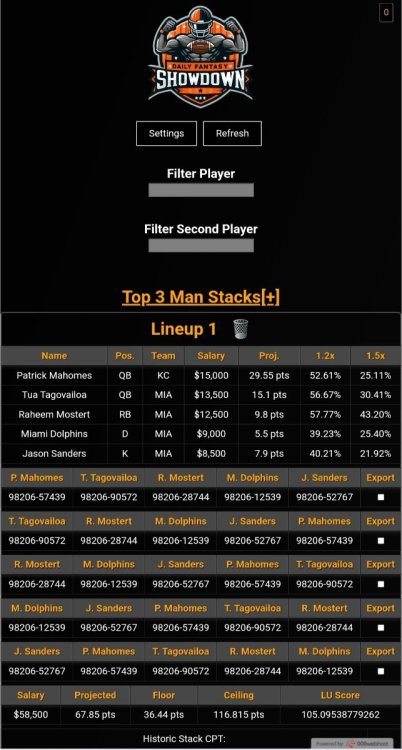
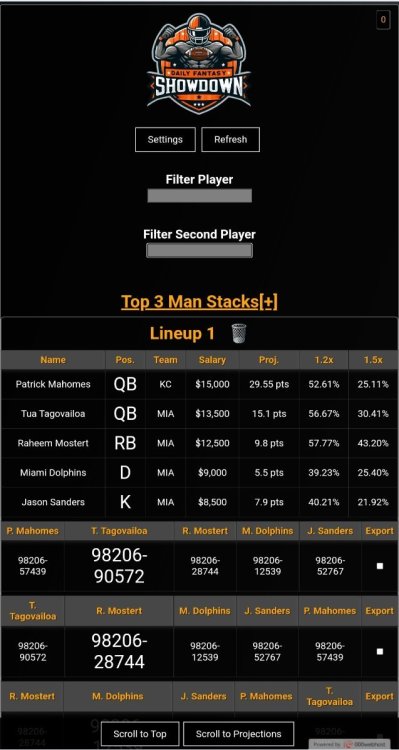
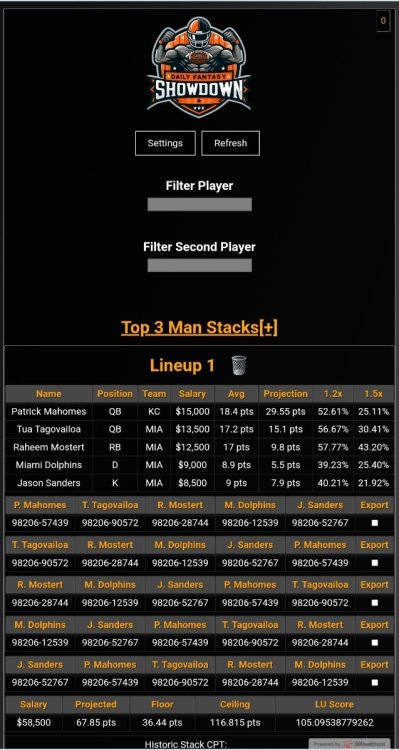
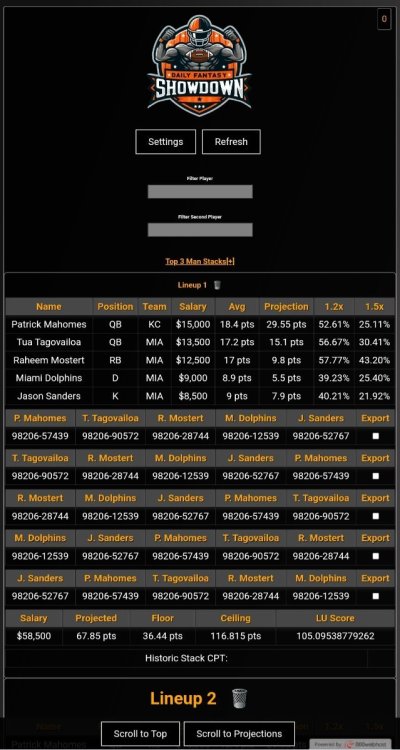



.thumb.jpeg.5da54518df0b69c737e8dabbcace30bb.jpeg)

